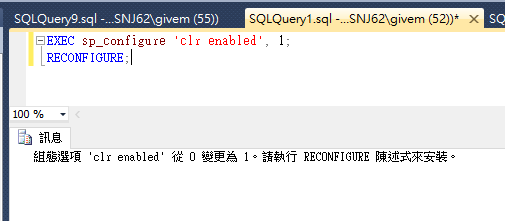使用 LeetCode 595. Big Countries 進行練習 :
There is a table World
+-----------------+------------+------------+--------------+---------------+ | name | continent | area | population | gdp | +-----------------+------------+------------+--------------+---------------+ | Afghanistan | Asia | 652230 | 25500100 | 20343000 | | Albania | Europe | 28748 | 2831741 | 12960000 | | Algeria | Africa | 2381741 | 37100000 | 188681000 | | Andorra | Europe | 468 | 78115 | 3712000 | | Angola | Africa | 1246700 | 20609294 | 100990000 | +-----------------+------------+------------+--------------+---------------+
A country is big if it has an area of bigger than 3 million square km or a population of more than 25 million.
Write a SQL solution to output big countries’ name, population and area.
For example, according to the above table, we should output:
+--------------+-------------+--------------+ | name | population | area | +--------------+-------------+--------------+ | Afghanistan | 25500100 | 652230 | | Algeria | 37100000 | 2381741 | +--------------+-------------+--------------+
1. 下載 tSQLt

2. 開啟SSMS,執行啟用 SQL CLR :
EXEC sp_configure 'clr enabled', 1; RECONFIGURE;

3. 啟動 TRUSTWORTHY
DECLARE @cmd NVARCHAR(MAX); SET @cmd='ALTER DATABASE ' + QUOTENAME(DB_NAME()) + ' SET TRUSTWORTHY ON;'; EXEC(@cmd);
4. 到 LeetCode595 資料庫裡面,執行 tSQLt.class.sql


執行之後,資料庫會產生許多 tSQLt 開頭的資料表跟 Stored Procedure

5. 建立資料庫 LeetCode 595 及資料表 World :
CREATE TABLE [dbo].[World]( [id] [int] IDENTITY(1,1) NOT NULL, [name] [nvarchar](50) NOT NULL, [continent] [nvarchar](50) NULL, [area] [bigint] NULL, [population] [bigint] NULL, [gdp] [bigint] NULL, CONSTRAINT [PK_World] PRIMARY KEY CLUSTERED ( [id] ASC )WITH (PAD_INDEX = OFF, STATISTICS_NORECOMPUTE = OFF, IGNORE_DUP_KEY = OFF, ALLOW_ROW_LOCKS = ON, ALLOW_PAGE_LOCKS = ON) ON [PRIMARY] ) ON [PRIMARY] GO

6. 建立測試 Class :
EXEC tSQLt.NewTestClass 'BigCountries'; GO

7. 建立測試 :
CREATE PROCEDURE BigCountries.[test Big Countries - LeetCode]
AS
BEGIN
IF OBJECT_ID('actual') IS NOT NULL DROP TABLE actual;
IF OBJECT_ID('expected') IS NOT NULL DROP TABLE expected;
------Fake Table
--+-----------------+------------+------------+--------------+---------------+
--| name | continent | area | population | gdp |
--+-----------------+------------+------------+--------------+---------------+
--| Afghanistan | Asia | 652230 | 25500100 | 20343000 |
--| Albania | Europe | 28748 | 2831741 | 12960000 |
--| Algeria | Africa | 2381741 | 37100000 | 188681000 |
--| Andorra | Europe | 468 | 78115 | 3712000 |
--| Angola | Africa | 1246700 | 20609294 | 100990000 |
--+-----------------+------------+------------+--------------+---------------+
EXEC tSQLt.FakeTable 'World';
INSERT INTO World (name, continent, area, population,gdp) VALUES ('Afghanistan', 'Asia',652230,25500100,20343000);
INSERT INTO World (name, continent, area, population,gdp) VALUES ('Albania', 'Europe',28748,2831741,12960000);
INSERT INTO World (name, continent, area, population,gdp) VALUES ('Algeria', 'Africa',2381741,37100000,188681000);
INSERT INTO World (name, continent, area, population,gdp) VALUES ('Andorra', 'Europe',468,78115,3712000);
INSERT INTO World (name, continent, area, population,gdp) VALUES ('Angola', 'Africa',1246700,20609294,100990000);
------Execution
Select name,population,area
INTO actual
from World Where area > 3000000 OR population > 25000000
------Assertion
--+--------------+-------------+--------------+
--| name | population | area |
--+--------------+-------------+--------------+
--| Afghanistan | 25500100 | 652230 |
--| Algeria | 37100000 | 2381741 |
--+--------------+-------------+--------------+
CREATE TABLE expected (
name nvarchar(50),
population bigint,
area bigint,
);
INSERT INTO expected (name, population, area) values('Afghanistan',25500100,652230)
INSERT INTO expected (name, population, area) values('Algeria',37100000,2381741)
EXEC tSQLt.AssertEqualsTable 'expected', 'actual';
END;
GO
8. 執行測試 :
EXEC tSQLt.RunAll

進到 SP 裡面修改一下值,確定測試真的有在運作 :


參考 :
